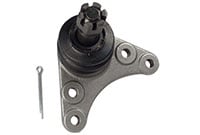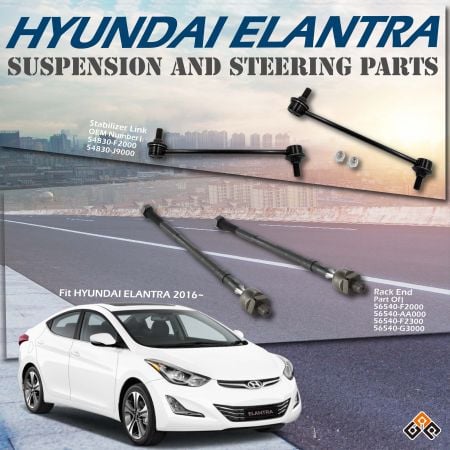Car Suspension Alignment—Worth It for Your Business or What?
What is Suspension Alignment, and Why Does it Matter
Suspension alignment, or wheel alignment, is all about setting each wheel precisely according to the car manufacturer’s specs. It’s not a one-size-fits-all process; different cars, even different driving conditions, impact alignment requirements. Imagine trying to walk with one foot slightly turned out; it’d be awkward and tiring. Alignment ensures each wheel is angled perfectly, so your car drives straight, tires wear evenly, and you’re not constantly adjusting the steering.
The alignment process is actually a careful balancing act between three angles:
| Angle | Description | Effect of Misalignment |
| Camber | Tilt of the wheel in relation to the car’s vertical axis | Uneven tire wear, reduced grip on turns |
| Caster | Angle of the steering axis, viewed from the side of the vehicle | Steering feels loose or stiff, reduced stability |
| Toe | Inward or outward angle of wheels in relation to the car’s centerline | Tires fight each other, causing uneven wear and pulling to one side |
Getting these angles right is all about balance and precision, ensuring a smooth, safe, and efficient ride.
Why is Suspension Alignment Important
Alignment’s impact goes beyond just keeping you in a straight line; it affects almost every aspect of your drive:
| Benefit | Explanation |
| Tire Life | Alignment ensures even wear, reducing the need for premature replacements |
| Handling | Proper alignment keeps the car stable, responsive, and predictable in turns |
| Fuel Efficiency | Misaligned wheels create drag, requiring more fuel to maintain speed |
| Safety | Ensures the car responds correctly to steering, which is crucial in emergencies |
Regular alignment checks are like an insurance policy for your car’s performance and your wallet. Small adjustments now mean avoiding bigger, costlier issues later.
What is The Science Behind Suspension Alignment and Why Precision Matters
Suspension alignment might sound simple, but there’s a lot of science to it. Alignment is a balancing act, combining physics and engineering to make sure each wheel is carrying its load, gripping the road right, and holding steady. Think about it: when you’re taking a corner, weight shifts to the outside wheels. If alignment’s off, the tires can’t grip as they should, and your control decreases. Misalignment isn’t just annoying; it can be unsafe.
Each alignment angle plays a role:
- Camber impacts how your car grips the road, especially during turns. Too much tilt, and your tire doesn’t get full contact, reducing grip and control.
- Caster affects how naturally the car returns to center after a turn. This is key for handling stability; if it’s off, the car might drift or feel like it’s pulling against you.
- Toe keeps your wheels rolling straight. When toe alignment is off, the tires are “fighting” each other, making the drive harder and reducing fuel efficiency.
All three angles have to be precisely dialed in. Alignment isn’t just “nice to have”; it’s essential for your car’s overall stability and performance.
What Are The Common Myths About Suspension Alignment
There are tons of myths out there about alignment, and some of them can lead to expensive mistakes:
| Myth | Reality |
| Alignment only matters after hitting a pothole | Routine checks catch gradual misalignment issues, not just after pothole impacts |
| Alignment can be done at home | Precision tools are required for accurate alignment; DIY often worsens the problem |
| Alignment is just for comfort | It also affects safety, braking, and tire wear, making it essential for overall performance |
| Lowering improves alignment | Lowering changes alignment angles, which can cause wear if not professionally adjusted |
Knowing what’s true and what’s not helps you make smarter decisions that keep your car safe, steady, and cost-efficient.
What is The Impact of Misalignment on Other Vehicle Components
Alignment affects more than just tires—it impacts the whole system. Think of it like a chain reaction. If alignment’s off, your tires wear unevenly, which affects traction and control. Over time, uneven tires stress your suspension, steering, and even brakes.
Misalignment can also make your steering feel “off,” like it’s pulling or drifting to one side. You’ll end up working harder just to keep the car steady, which is frustrating and unsafe. Plus, the brakes? They’re affected, too. They’ll have to work harder, especially if the car pulls to one side. The whole system gets worn out faster, which means higher repair costs. Fix alignment early, and you avoid this costly chain of wear and tear.
How to Check for Misalignment at Home
You don’t always need a shop visit to notice alignment issues. Here are a few DIY checks:
| Check | How to Do It | Signs of Misalignment |
| Tire Wear | Inspect tire treads; compare wear on each side | Uneven or rapid tread wear |
| Steering Test | Drive straight on a flat road; briefly release the wheel (when safe) | Car drifts to one side |
| Toe Check | Measure distance between front and back of front tires; compare measurements | Different measurements indicate misalignment |
These checks are great for spotting potential issues, but for precise adjustments, head to a professional.
How Does Alignment Differ for SUVs, Trucks, and Sedans
Different vehicles have different alignment needs.
| Vehicle Type | Alignment Needs | Reasons |
| SUVs/Trucks | More frequent and robust alignment checks | Heavier weight and possible off-road conditions increase stress |
| Sedans | Regular alignment for smooth handling and tire longevity | Lighter weight; designed for paved roads |
What are Environmental Factors That Affect Alignment
Weather can mess with alignment big time. Cold weather lowers tire pressure, which throws off handling and can make alignment issues worse. Rain, ice, and snow often lead to potholes, which are alignment’s worst enemy. And after a winter of rough roads? Definitely time for an alignment check.
Even extreme heat can mess with your tires and alignment, especially if you’re driving over soft asphalt. Checking alignment after extreme seasons helps keep your car steady, no matter the conditions.
How Alignment Impacts Vehicle Resale Value
When you sell, a well-maintained alignment shows buyers the car’s in good shape. Misalignment wears down tires and suggests possible suspension issues, which can lower the value. Keeping alignment in check helps you get a better resale price and makes selling easier.
How Suspension Alignment Affects Driving Experience
Good alignment means steering feels smooth, handling’s predictable, and fuel efficiency is better. It’s one of those things that makes driving enjoyable, safer, and cheaper in the long run. Why settle for less?
Want to Keep Your Ride Running Smooth? Hit Up Great Auto Parts!
Look, alignment’s not just about driving straight—it’s about keeping everything in balance, saving you money, and making your car feel right. At Great Auto Parts , we get it. We’ve got everything your suspension system needs to stay solid—control arms , tie rod ends , you name it, all top-notch quality so you’re not swapping parts every few months.
Why mess around with anything less? Get the parts that keep your car steady, safe, and, yeah, maybe a bit smoother than the guy next to you. Great Auto Parts has got you covered. Give us a shout , and let’s get your car set up right!




